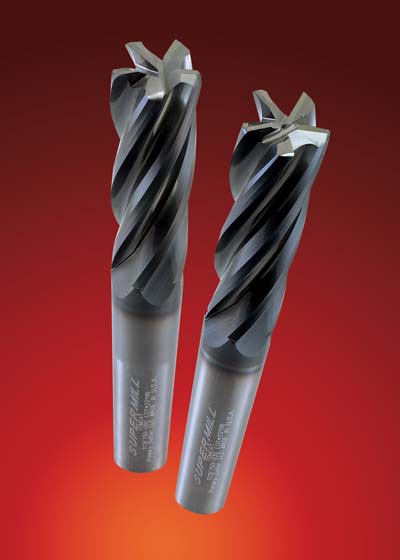
Primary Cutter LLC has introduced the SUPERMILL TOMCAT 5-flute carbide endmill line designed to run at high RPM and high feed rates providing rapid stock removal. Utilizing unique tool geometry design, TOMCATS are capable of feed rates of 200 IPM on Steels, Alloy Steels and Stainless Steels. This enables users to reduce machining time and increase production, sometimes doubling production, by taking more high speed finishing radial cuts instead of slower roughing cuts.
TOMCAT endmills are available as sharp corner, corner radius, regular length, long length and stub length. Sizes are from ¼" through 1" in diameter. The TOMCAT line ideal for a wide range of applications including aerospace, automotive, medical, ordinance and more.
Contact Details
Related Glossary Terms
- alloy steels
alloy steels
Steel containing specified quantities of alloying elements (other than carbon and the commonly accepted amounts of manganese, sulfur and phosphorus) added to cause changes in the metal’s mechanical and/or physical properties. Principal alloying elements are nickel, chromium, molybdenum and silicon. Some grades of alloy steels contain one or more of these elements: vanadium, boron, lead and copper.
- endmill
endmill
Milling cutter held by its shank that cuts on its periphery and, if so configured, on its free end. Takes a variety of shapes (single- and double-end, roughing, ballnose and cup-end) and sizes (stub, medium, long and extra-long). Also comes with differing numbers of flutes.
- feed
feed
Rate of change of position of the tool as a whole, relative to the workpiece while cutting.
- inches per minute ( ipm)
inches per minute ( ipm)
Value that refers to how far the workpiece or cutter advances linearly in 1 minute, defined as: ipm = ipt 5 number of effective teeth 5 rpm. Also known as the table feed or machine feed.
- stainless steels
stainless steels
Stainless steels possess high strength, heat resistance, excellent workability and erosion resistance. Four general classes have been developed to cover a range of mechanical and physical properties for particular applications. The four classes are: the austenitic types of the chromium-nickel-manganese 200 series and the chromium-nickel 300 series; the martensitic types of the chromium, hardenable 400 series; the chromium, nonhardenable 400-series ferritic types; and the precipitation-hardening type of chromium-nickel alloys with additional elements that are hardenable by solution treating and aging.







